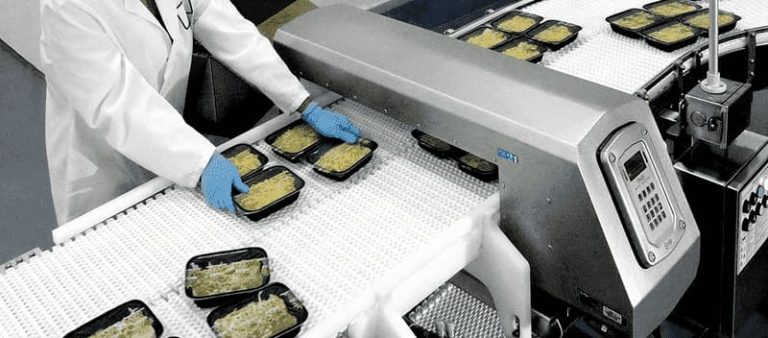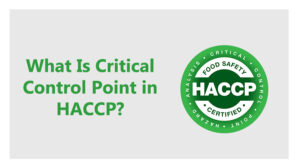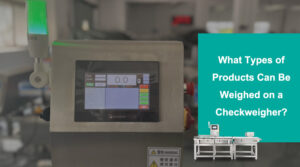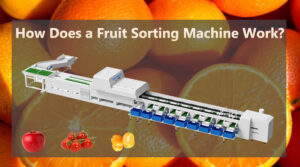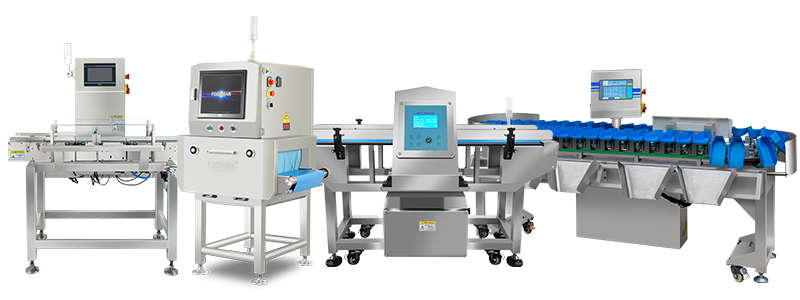Food inspection is a crucial part of food processing. It helps food producers effectively safeguard and protect consumers from foodborne illnesses. Additionally, it helps you, as a brand, to protect your reputation and ensure your customer’s safety.
Metals are among the most likely contaminants in food processing and packaging. Hence, a food metal detector is needed as the end-line defense in food processing before getting the finished products to consumers. The need to detect foreign objects in food materials results from the increasing possibilities of food safety hazards.
Metal detectors are efficient tools, aiding the detection and removal of physical contaminants in food products. However, as these detectors continue to evolve, so are food contaminants. Therefore the question remains – are metal detectors enough to prevent food contamination? Read on as we give you a comprehensive answer to this question.
Why Do We Need Food Metal Detection in Food Processing?
In most cases, metal is the most common foreign object that finds its way into food material. This is because the machinery involved in processing food items has metallic components. These contaminants can affect other processing equipment and cause foodborne illnesses to consumers. Therefore, there is an increasing need for food metal detection in food processing.
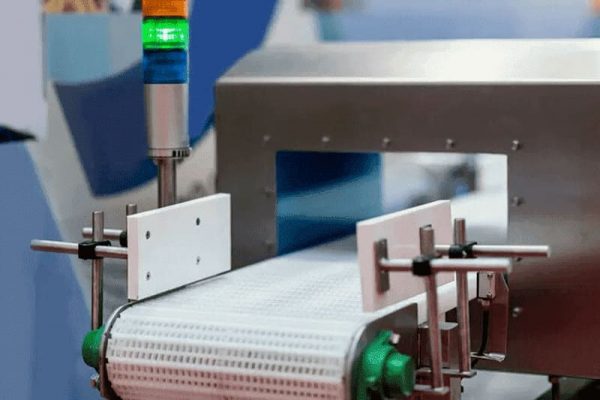
Metal detectors help identify and extract ferrous & non-ferrous metals and stainless steel while packaging food items, making them valuable in food for processing. The need for metal detection in food processing falls in three areas:
Challenges on Food Contamination During Each Process
While food items are still in their raw forms, they usually come in contact with different processes. These processes include cutting meat, grinding spices, filleting fish, mixing wet and dry baking ingredients, and many more.
In some areas, you cut larger pieces into smaller portions that can be quickly packed. A good example is cutting vegetables into different, convenient, and smaller sizes. Metallic machinery performs the cutting involved in the process, bringing a likely metal contaminant into the food chain.
The possibility of having a metal contaminant in the chain necessitates using a food metal detector. They help detect contaminants and ensure easy removal.
Avoid Recall Risks
Recalls occur when consumers, watch groups, or manufacturers find out that a product or food is defective. This defect may affect the performance of the food product or possibly harm consumers. That way, there is a high risk of legal problems for producers.
Product recalls can result in governmental prosecution of product liability claims. In most cases, recalls occur not because of contamination but because of other factors such as mislabeling.
If you’re using metal detectors, you’re being proactive in preventing recalls. This means that you would have detected any contaminants before releasing the products into the market. This significantly minimizes the risks of recalls in food processing.
Comply With International Food Safety Regulations
According to Hazard Analysis Critical Control Points (HACCP), food processors should adequately identify and remove foreign objects (like metals) that enter food products. Likewise, Current Good Manufacturing Practices (CGMPs) require appropriate hygienic practices, facility and equipment sanitation, and process controls.
Adhering to these regulations requires the use of efficient food processing equipment. A food metal detector is one of the top equipment you want handy for removing metal contaminants during food processing.
Metal Detector Working Principles and Detecting Range
Understanding how a metal detector works will give you an idea of its importance in food processing. Let’s look at their working principles and detecting range.
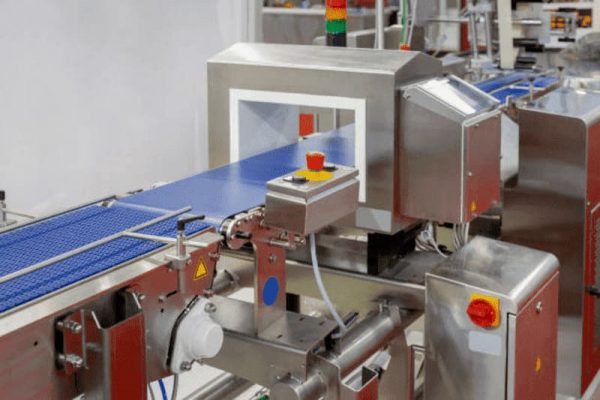
Working Principles of Metal Detectors
Any food metal detector works based on transmitting a magnetic field and interpreting a received signal from the target area. They often use balanced, three-coil systems to detect small particles of metals.
The center coil connects to a high-frequency radio transmitter while the coils on each side of the transmitter coil act as receivers. The side coils are identical and often placed at equal distances from the transmitter. This way, they can receive a similar signal to produce the same level of output voltage. When connected in opposition, the output from the coils is zero.
However, particles of metal passing through the coils will disturb the high-frequency field under one coil. As a result, the voltage will change by some microvolts, causing a state of imbalance. Therefore, the output will no longer be zero. This indicates the presence of metal contaminants in your food product.
Detecting Range of Metal Detectors
Most metal detectors detect metal contaminants or objects about 4 to 8 inches (10 to 20 cm) deep. In perfect conditions, an average-range metal detector reaches 12 to 18 inches (30 to 45 cm) underground. Some advanced and specialized sensors can reach as far as 65 feet (20 m).
Therefore, the specific range will depend on the detector you are using and the kind of metal you want to detect. Standard metal detectors like the Conveyor Metal Detector have a detection width of 400mm to 600mm, and a detection height up to 1200mm.
It is highly stable and sensitive, using phase intelligent tracking technologies for the best results. The anti-interfere component minimizes the risks of false results. This metal detector can detect metal contaminants ranging from ferrous metals to nonferrous metals and stainless steel. You can use it for all kinds of food products, including bread, meat, nuts, poultry, etc.
Are Metal Detectors Enough for Foreign Objects Detection?
No, metal detectors are not enough to detect foreign objects in food substances. There are other equipments that help prevent contamination and food safety hazards. One of these tools includes X-ray inspection systems.
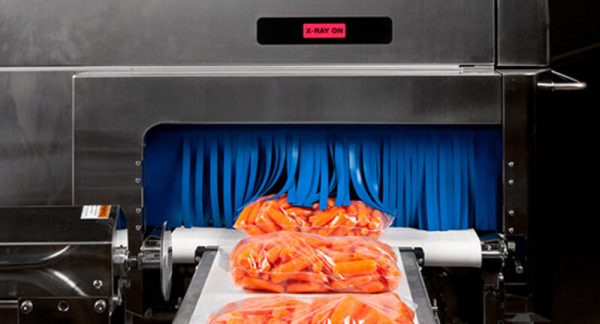
An X-ray inspection system operates based on a density measurement system, allowing it to detect specific metallic contaminants in some situations. X-ray beams pass through the products, and a picture appears on the detector showing the contaminant. Meanwhile, metal detectors only operate based on the response of an electromagnetic field at a particular frequency.
Working Principles and Detecting Range of X-ray Inspection System
An X-ray inspection system work based on the density of the contaminant and the food product. The X-ray machine has two primary components: the generator and the image detection system. It allows the user to gain detailed imagery of the internal composition of the food without difficulty.
As the X-ray beam penetrates the food product, it will lose some of its energy. The presence of a contaminant will cause it to lose further energy. As the beam exits the food product, it will reach a sensor. This sensor converts the energy signal to a detailed image of the food product’s interior.
Foreign materials like metal contaminants will appear as darker shades of grey. Thus, you can easily identify foreign objects in your food products with X-ray detection systems. Using an X-ray machine eliminates the need to open up a product to get a picture of its internal composition.
The electromagnetic radiations of X-rays occur within the detecting frequency range of 30 PHz – 30 EHz. An X-ray’s wavelength range falls between 0.01 nanometers and 10 nanometers. In the electromagnetic spectrum, X-rays fall between gamma rays and ultraviolet light. X-rays are generally of two types:
- Hard X-rays
- Soft X-rays
The hard X-rays have almost 100 picometers wavelength values, while soft X-rays possess a proportionally lower wavelength value of close to 10 nanometers.
What Are the Differences Between Metal Detectors and X-Ray Inspection Systems ?
| Feature | Metal Detector | X-Ray Inspection System |
|---|---|---|
| Detectable Materials | Detects metals like wires and aluminum. | It detects metallic objects and many other solid contaminants. |
| Accuracy | The accuracy of metal detectors is 0.8. | It can detect metals and other contaminants with an accuracy of 0.3. |
| Speed | It operates over a wide range of programmed speeds. | Its speed must be constant while its range is possibly limited. |
| Sensitivity | It has the best sensitivity for small products, unpackaged products, dry products, or products with nonconducive packages. | It is more sensitive to packaged products like metal cans and glass bottles. It is also suitable for metalized seals or film. |
| Performance Requirements | Performance depends on product effect, aperture size, and software. | Its performance depends on X-ray power, product texture, receiver, and software. |
| Pricing | More affordable than x-ray inspection system. | X-ray inspection systems are 2 to 3 times more expensive than metal detectors. |
| Challenges | Conductive products such as wet or salty goods are often challenging. | It has challenges performing well with tender or dense products with lots of texture. |
If you’re looking for an efficient X-ray machine to improve the safety of your food product, then the X-Ray Inspection System for Packaged Products is your best option. This product is broad spectrum and can penetrate a wide range of products to detect metal and non-metal contaminants.
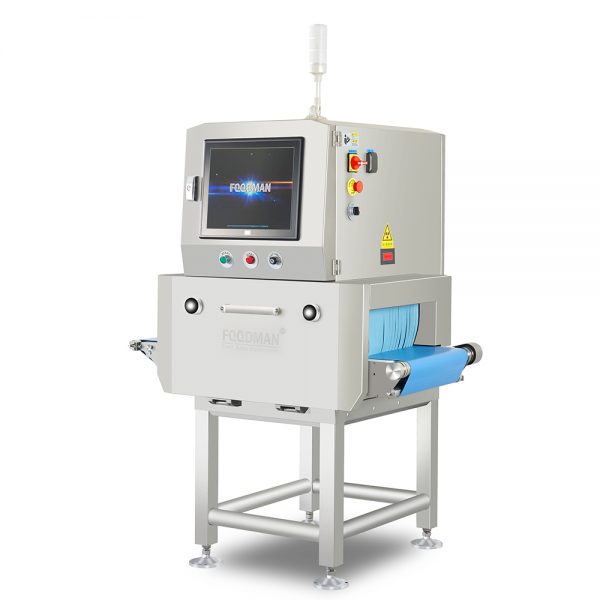
Aside from detecting foreign objects, it can also detect damaged products, block parts that do not need detection, and count missing items. This machine has excellent environmental adaptability and safety, keeping food handlers safe during usage.
FAQs
Why Choose Metal Detectors Over X-rays?
Both metal detectors and X-ray inspection systems have their respective functions and specialties. Cost is often the main reason you should choose a metal detector over an X-ray system. X-ray inspection systems often require high amounts of investment. On the other hand, metal detectors are less expensive and require less space. They are also easier to operate and maintain.
What you should consider before choosing any inspection equipment, you should consider the possible sources of contamination on a product line and manufacturing method. If the most prevalent contaminant is metal, making the metal detection system your first choice is ideal. Furthermore, metal detectors use electromagnetic interference instead of grayscale imagery.
Does In-Foil Packaging Rule out Metal Detectors?
Advanced metal detectors can now scan and detect metal contaminants in packaged products in laminated foils with high sensitivity. However, pure aluminum foil, such as an oven-ready tray, may be challenging. In this case, you can consider X-ray inspection systems to get the best results.
How Can I Act More Sustainably and Invest in Future-Proof Equipment?
Although the latest inspection and detection systems are efficient, you must ensure that these systems are in the right working environment. To future-proof your equipment operations, you need to invest in operator training. This will ensure efficiency and productivity while preventing harm to your staff.
Furthermore, your equipment must maximize comfort and efficiency. Thus, it will enable operators to work safely in the food processing unit. You should also remember to keep a sustainable environment by investing in renewable energy and electric-powered machines.
Where Should The Metal Detector Come in During Food Processing?
Metal contaminants can enter food products at any point of processing. Therefore, it is ideal to put a food metal detector at the end of the whole process. However, to get the best results, it is best to have these detectors at the beginning and end of the food processing line. This will help producers have a view of how, where, and when the contaminants enter the food during processing.
If the food product passes the first detector and fails the second, you will know that contamination didn’t come from the raw ingredients but from the processing. This way, you can pinpoint the source of contamination and prevent future occurrences.
Conclusion
Many food processors rely solely on metal detectors to ensure the safety of food products. These metal detectors prove efficient in detecting metal contaminants in food. However, there are other food inspection systems to consider. Generally, your choice will depend on your unique needs and budget.
If you have higher precision requirements or need to inspect metal-packaged products, you should consider using X-ray inspection systems. They offer a higher percentage of detention reliability and detect more than metal contaminants. Thus, when ensuring the safety of your food products, you must consider every available option.

